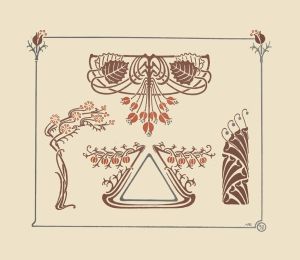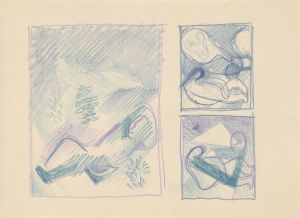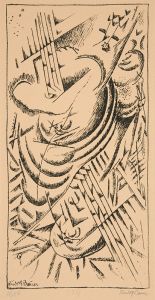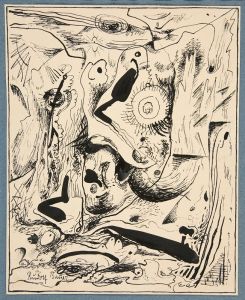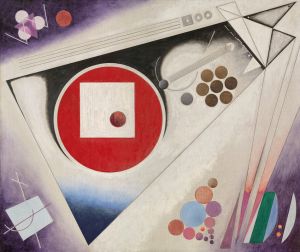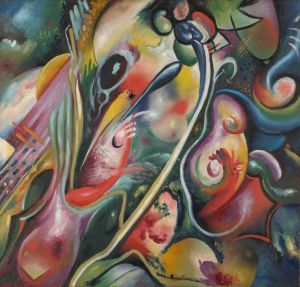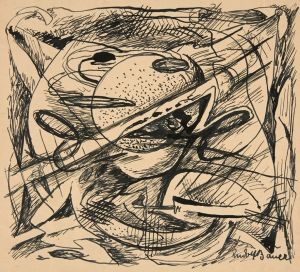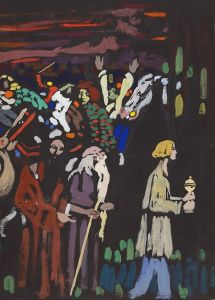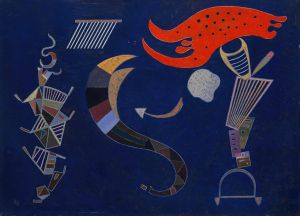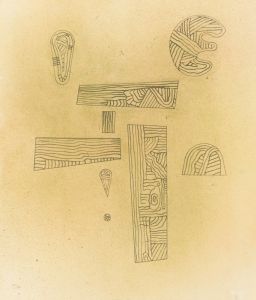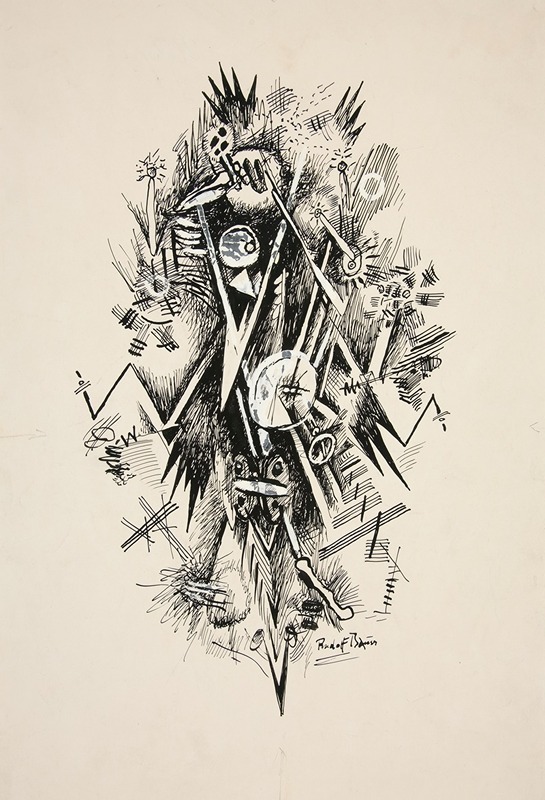
Untitled
A hand-painted replica of Rudolf Bauer’s masterpiece Untitled, meticulously crafted by professional artists to capture the true essence of the original. Each piece is created with museum-quality canvas and rare mineral pigments, carefully painted by experienced artists with delicate brushstrokes and rich, layered colors to perfectly recreate the texture of the original artwork. Unlike machine-printed reproductions, this hand-painted version brings the painting to life, infused with the artist’s emotions and skill in every stroke. Whether for personal collection or home decoration, it instantly elevates the artistic atmosphere of any space.
Rudolf Bauer was a German painter known for his contributions to the non-objective art movement in the early 20th century. His work, "Untitled," is a notable example of his abstract style, which often features geometric shapes, bold colors, and dynamic compositions. Bauer's art is characterized by its departure from representational forms, focusing instead on the emotional and spiritual aspects of color and form.
Bauer was born on February 11, 1889, in Lindenwald, Germany. He began his artistic career in Berlin, where he was involved with the avant-garde art scene. In 1915, he co-founded the journal "Der Sturm," which became a significant platform for promoting modern art in Germany. Through this journal, Bauer connected with other influential artists of the time, including Wassily Kandinsky, who would become a major influence on his work.
The "Untitled" piece by Bauer reflects his commitment to non-objective art, a movement that sought to create art free from the constraints of the physical world. This approach was rooted in the belief that art could convey deeper truths and emotions through abstraction. Bauer's work often features a complex interplay of shapes and colors, creating a sense of movement and rhythm that engages the viewer on a visceral level.
In the 1920s, Bauer's work gained recognition, and he became associated with the Solomon R. Guggenheim Foundation. Hilla Rebay, an artist and advisor to Solomon Guggenheim, was a strong advocate for Bauer's work and played a crucial role in introducing his art to American audiences. Rebay and Bauer shared a vision of art as a spiritual experience, and she helped secure his legacy by including his works in the Guggenheim's collection.
Bauer's relationship with the Guggenheim Foundation, however, was fraught with tension. Despite his initial success, Bauer became embroiled in legal disputes over the ownership and rights to his artworks. These conflicts, coupled with the political turmoil in Germany during the rise of the Nazi regime, led to a challenging period in Bauer's life. He was arrested by the Nazis in 1938 due to his avant-garde art, which was deemed "degenerate." After his release, Bauer emigrated to the United States, where he continued to work but remained largely isolated from the art world.
"Untitled" exemplifies Bauer's dedication to exploring the possibilities of abstract art. His use of vibrant colors and intricate compositions invites viewers to experience art as a form of visual music, where the arrangement of elements creates harmony and dissonance. Bauer's work is a testament to his belief in the transformative power of art, a belief that continues to resonate with audiences today.
Rudolf Bauer passed away on November 28, 1953, in Deal, New Jersey. Despite the challenges he faced during his lifetime, his contributions to the development of abstract art remain significant. His works, including "Untitled," continue to be celebrated for their innovative approach and emotional depth, securing his place in the history of modern art.





